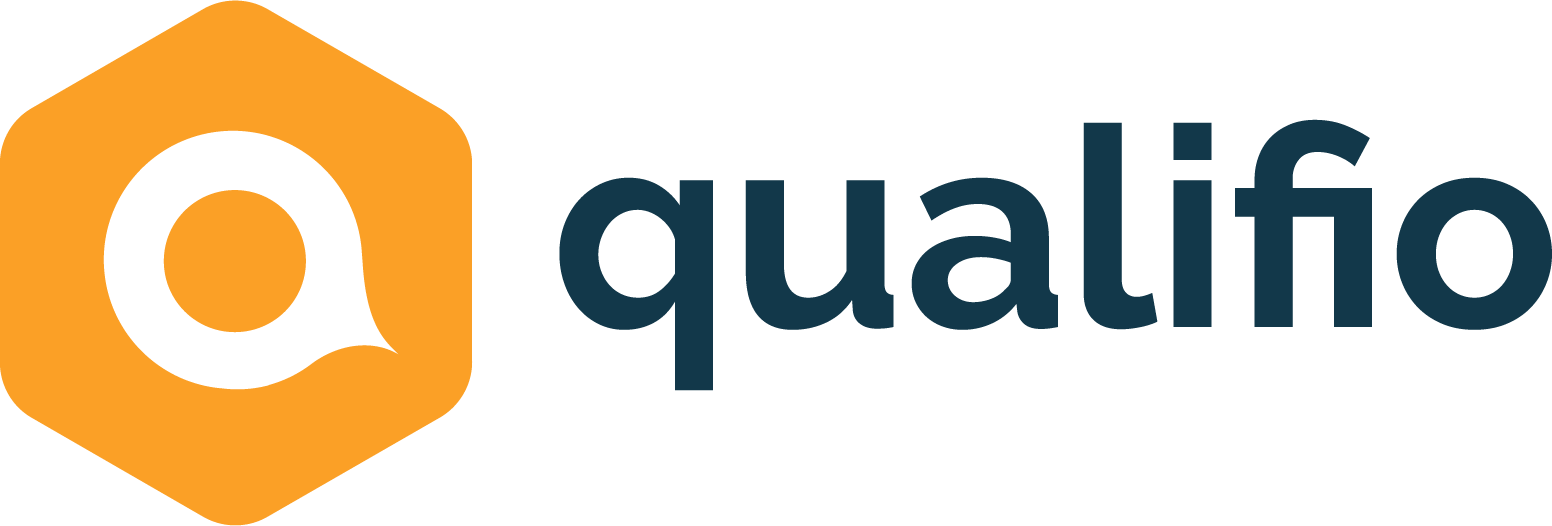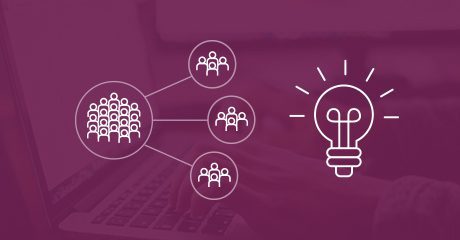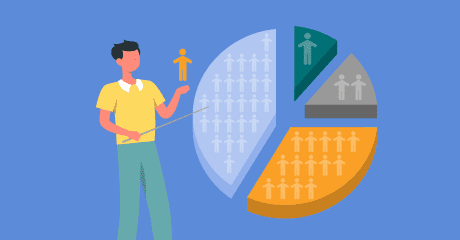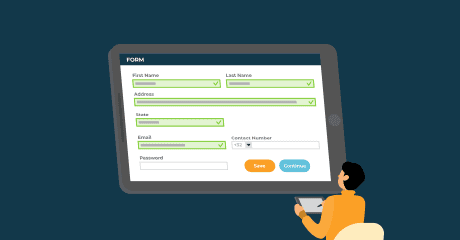5 ways to improve your data segmentation
Not knowing who you are talking to is taking the risk of seeing your messages disappear in limbo. That’s what segmentation is all about: relying on buyer personas and data collection to deliver customised messages. To cut a long story short: being able to deliver the right message, to the right person, at the right time and via the right channel.
Segmenting means forming groups of customers or prospects with common characteristics. These groups are both exhaustive (each individual belongs to a group), exclusive (this individual belongs to only one group) and homogeneous (all individuals within the group have characteristics that made this group possible).
As an essential step since the earliest days of marketing, segmentation did not wait for our ecosystem’s digital transformation to impose itself. However, the digital era has significantly changed the way we segment our data, and especially the use we are now able to make of it. Fundamentals remain the same but the techniques evolve.
Here are 5 ways to improve the segmentation of your data and bring more efficiency to your marketing.
1. Enrich your data to qualify your audience
The development of digital marketing allows a level of customisation that has never been achieved before. The quantity and nature of data now available for collection and segmentation make it possible to base decisions on proven behaviours.
However, to be exploited correctly, each segment must be enriched with a minimum of reliable data. Therefore, your database must constantly be updated to stay relevant. Contact details, personal preferences, purchase history… all this data can be processed by a CRM or a DMP which, once connected to onboarding tools, can even reconcile offline and online data. The data relevancy is crucial, as it will limit targeting errors and significantly increase the ROI of the marketing campaigns you will launch.
However, a precaution is necessary: the entry into force, next spring, of the new European regulation on data protection (GDPR) will force to respect several new obligations. And if according to a study conducted by Compuware, more than 70% of companies say they have a compliance plan, this plan is not necessarily detailed…
2. Integrate an omnichannel approach into your strategy
Back in the day, things were much simpler: a customer wanted a product, went to the store and bought what they wanted based on the seller’s advice.
Nowadays, the multiplicity of sales channels has made the tracking of the customer’s journey much more complex: they use several devices (phone, tablet, computer), across multiple platforms (mobile application, website, social media) and respond to different stimuli (advertising, video, emailing…).
These new behaviours have brought marketing into the omnichannel era: all real and virtual points of contact converge in real time to create the best customer experience possible. But the “perfect” customer experience requires a mastery of big data and an adapted segmentation.
“The sum of all brand interactions will create a feeling that will determine the ability to retain the customer. Consistency between the different channels is crucial, at the risk of seeing the customer go buy elsewhere in case of bad interactions.”
– Hélène Campourcy, Marketing and Innovation Director of Teleperformance
Indeed, nobody wants to receive an advertisement for a product bought the day before or a request for a recommendation when they have just lodged a complaint with the customer support. This is why customer knowledge is much needed: to enhance the personalisation of the relationship.
And there is still a long way to go regarding seamless omni-channel customer journeys. According to a CXP Group study, conducted in partnership with Pitney Bowes, Sigma Informatique and Manhattan Associates, 68% of retail companies surveyed underline the need for a better harmonisation between channels, on at least one of these three axes: services, price and loyalty program.
Thus, the same report (2017) explains that, in order to support a customer in their journey, brands can share information on their website or via a mobile app, starting with very operational information: package delivery tracking, purchase and billing history, personal information and delivery preferences of the customer, etc.
Quite simply, if they are to retain customers, retailers are now forced to deploy omni-channel solutions.
3. Identify the right segmentation criteria
The right segmentation is based on strong differentiating criteria. It is not the same in B2C as in B2B, for example. Three main categories of criteria can lead to the formation of operational segments:
- Sociodemographic criteria: age, gender, occupation, university path, work experience, income level, family situation or even weight and size depending on usage… these descriptive criteria, because they are both often differentiating and readily available, have long constituted the first level of segmentation.
- Psychosociological criteria: lifestyle, activities, political opinions, social commitment, tastes… this information brings your data to life. But they require more complex approaches in terms of data collection, analysis and activation. It often comes from third parties, specialised in research and sociological studies. Be careful, however, to ensure the lawfulness of the data collected, especially with “sensitive” data such as religious or ethnic statistics.
- Behavioural data: purchasing behaviour, brand loyalty, use of products, technological habits… these criteria are based on the observation of real uses over time. This is where the advent of digital has allowed taking a big step forward since so much behavioural data can now be collected easily.
To achieve a good segmentation is to identify among these different types of criteria which ones are the most important in terms of relationship to the brand. Once this is done, other criteria will complete the portrait of the segment so that it is reliable and operational.
As always, the criteria to be used for segmentation will depend on the business objectives of this segmentation. For example, RFM, a segmentation model based on three types of variables (recency, frequency and amount of purchases over a period of time), enables an efficient segmentation of consumers in order to send them targeted communications in line with their purchasing habits. In B2B, socio-demographic criteria do not represent evidence of decision-making processes. Conversely, purchases can be influenced by the buyer’s profile: concerns, responsibilities, issues and professional goals.
4. Real-time segmentation and personalisation
It is now possible, thanks to the multiple tracking techniques integrated into most digital tools, to activate real-time segmentation. The device used, type of browser, browsing history, geolocation, identification, number of pages viewed, validation of a conversion, session duration… each action performed online reveals valuable information that can be used to personalize your content.
Browsing from a mobile? We will display a web page with an adapted design and content. Using Safari for iOS? We will offer the download of our iPhone app. Living abroad? We’ll switch the language of your interface. Already bought from us? We recommend products related to your last purchase.
Real-time segmentation, coupled with automation scenarios and possibly predictive algorithms, helps create a tailor-made journey for a simple purpose: a better ROI. For example, Pages Jaunes (Yellow Pages) has seen the completion rate of its online satisfaction survey increase by 25% when proposing it in a contextualised way to new visitors.
5. Prioritise your segments according to their value
Creating groups of users is a good thing. Being able to value and prioritise those, is even better.
Lead scoring, for example, allows you to assign a score to each of your prospects, depending on their degree of “appetite” for an offer. It is particularly useful for marketing automation, as it allows a better personalisation of the commercial approach: varying the pressure and differentiating “hot” prospects, which must be contacted quickly, from the others, for whom the nurturing period should be extended… This scenario evolves as more data is collected: one of your “cold” prospects downloads a white paper or leaves a comment on your Facebook page? Their score is automatically updated!
French telecommunications company Orange uses lead scoring in a variety of ways: household profiling, management of direct marketing operations, customisation of commercial offers, and even anti-churn campaigns.
“Let’s say a customer has been flagged as “fragile”, that is to say that there is a risk that they cancel their subscription. If they call our customer service from their registered phone number, the call is automatically rerouted not to the “classic” customer service, but to a “retention” cell that has commercial leeway to try to retain them.”
– Claude Riwan, director of Orange’s scoring team
By bringing all the data together in one place, segmentation becomes a central lever of business intelligence. A way to no longer work “on sight”, to better anticipate your priorities, and to activate strategies based on accurate data.
Data segmentation is a major strategic goal to implement relevant, personalised and impactful marketing campaigns. A goal that can be difficult to manage internally and for which external expertise will bring freshness, innovation and differentiating value.








